Hong Kong, China – March, April & May, 2011
Located on an island at the edge of the South China Sea, Hong Kong has so far managed to avoid the worst of the air pollution that plagues especially the northern parts the mainland. While the air is a long ways off from being clean (my sensitivity to the invisible particulate matter at one point led me to visit the doctor’s office), sunny days and blue skies (usually cloudless) were still quite normal to witness throughout the spring months in Hong Kong. This made daytime excursions into the city particularly attractive. Kowloon Park, located in Tsim Sha Tsui, is one of the largest public parks in urban Hong Kong, home to gardens sculptural, botanical, and bird.







 Across Victoria Harbour amid the skyscrapers on Hong Kong Island is the Hong Kong Zoological and Botanical Gardens. While not quite as beautiful as Kowloon Park, it was charming enough as an older city park which still included few reminders of the city’s colonial past.
Across Victoria Harbour amid the skyscrapers on Hong Kong Island is the Hong Kong Zoological and Botanical Gardens. While not quite as beautiful as Kowloon Park, it was charming enough as an older city park which still included few reminders of the city’s colonial past.





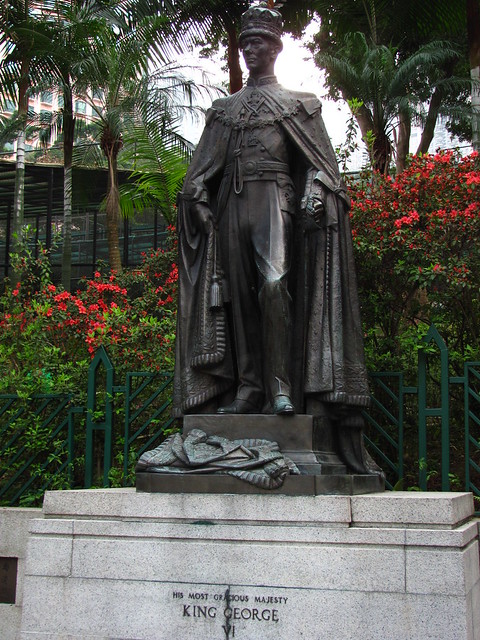 However, the zoo component as it stood in 2011 was very far from world-class, with simple cage enclosures typical of earlier decades housing a standard variety of smaller and less expensive to maintain animals. For those who can pay more, the city has a much more modern zoological experience nearby in the form of Ocean Park.
However, the zoo component as it stood in 2011 was very far from world-class, with simple cage enclosures typical of earlier decades housing a standard variety of smaller and less expensive to maintain animals. For those who can pay more, the city has a much more modern zoological experience nearby in the form of Ocean Park.
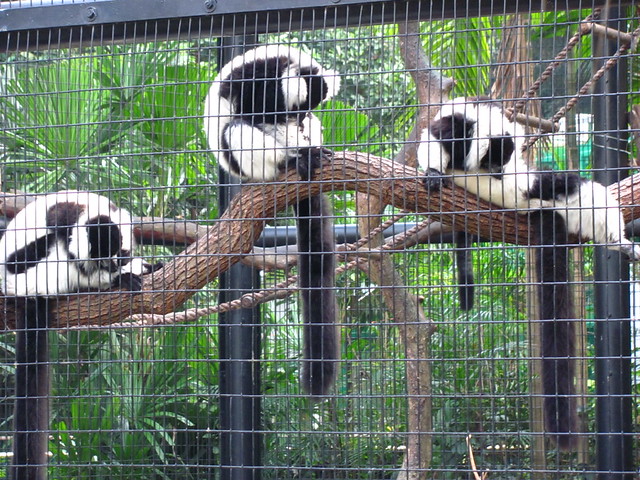
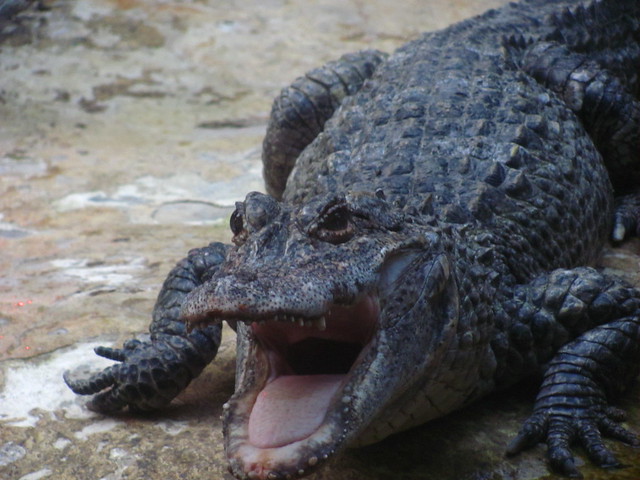

 Something called “Tai Chi Wheels” you’re supposed to spin as exercise.
Something called “Tai Chi Wheels” you’re supposed to spin as exercise.
Figuring out where to go next…
 Like the British, Hong Kong drives on the left side of the road, while the rest of China drives on the right, adding an extra complexity to the already-complex Hong Kong-Mainland border crossings.
Like the British, Hong Kong drives on the left side of the road, while the rest of China drives on the right, adding an extra complexity to the already-complex Hong Kong-Mainland border crossings.
 Passing by the US Consulate in Hong Kong on the way to the next stop, a decidedly (purposely?) unwelcoming looking structure squeezed in along the side of the road.
Passing by the US Consulate in Hong Kong on the way to the next stop, a decidedly (purposely?) unwelcoming looking structure squeezed in along the side of the road.
 The fact that Hong Kong has its own amusing loonies on full public display is actually a reassuring sign for the city’s increasingly-besieged civil liberty laws.
The fact that Hong Kong has its own amusing loonies on full public display is actually a reassuring sign for the city’s increasingly-besieged civil liberty laws.
 Hong Kong’s skyscrapers look spectacular against a clear blue spring sky.
Hong Kong’s skyscrapers look spectacular against a clear blue spring sky.
Although it’s not the tallest, the Bank of China Tower is probably Hong Kong’s most famous and architecturally distinctive skyscraper. Interestingly, it achieved that identity despite (or maybe because of?) the fact it deliberately ignored feng shui principles, unlike most other buildings in the city. While feng shui is complex, from my understanding its unlucky reputation primarily comes down to the sharp, knife-like design and the X’s along the tower (which, with their four points, symbolize death, as the Chinese words for 4 and death are similar).
With that in mind, it seemed like a good idea to go up the tower!
 Like Central Plaza and IFC2, the Bank of China Tower offered a free public observation deck (if unadvertised, accessible only after signing in and receiving a visitor pass at the front desk). I was hoping that this observation deck might get me closer to the actual top of the tower, but it once again turned out to only be located only part way. Still, thanks to the prime location the view might have been slightly superior to the other two.
Like Central Plaza and IFC2, the Bank of China Tower offered a free public observation deck (if unadvertised, accessible only after signing in and receiving a visitor pass at the front desk). I was hoping that this observation deck might get me closer to the actual top of the tower, but it once again turned out to only be located only part way. Still, thanks to the prime location the view might have been slightly superior to the other two.



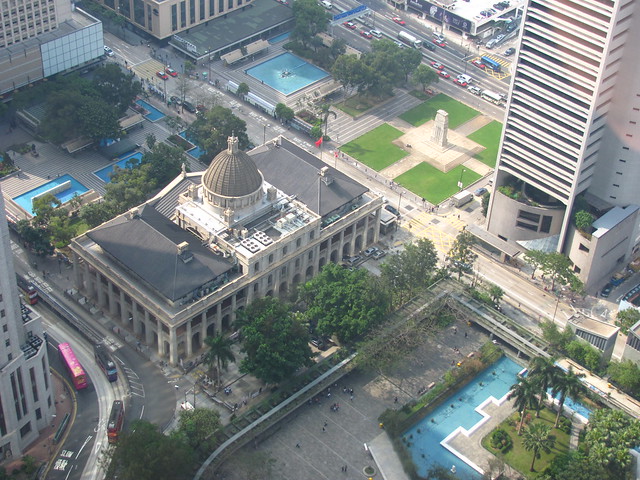

 The observation deck also hosted a partial model of Hong Kong with the Bank of China Tower.
The observation deck also hosted a partial model of Hong Kong with the Bank of China Tower.

 Also of note, the nearby HSBC Tower features some cannon-like maintenance cranes affixed to the top of the structure. Apparently these are pointed at the Bank of China Tower, added after that tower was constructed in order to fend off its negative energy.
Also of note, the nearby HSBC Tower features some cannon-like maintenance cranes affixed to the top of the structure. Apparently these are pointed at the Bank of China Tower, added after that tower was constructed in order to fend off its negative energy.
 Spring also brought plenty of rain, which we encountered during a group outing to visit a Fisherman’s Temple in Yuen Long district.
Spring also brought plenty of rain, which we encountered during a group outing to visit a Fisherman’s Temple in Yuen Long district.
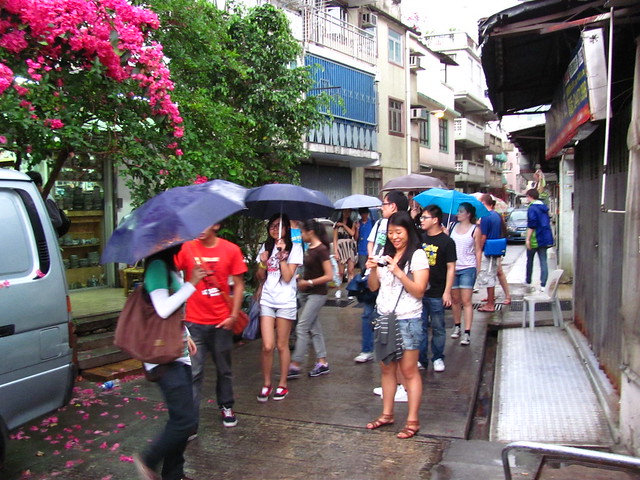



 I tried adding an incense stick but apparently I upset the god of the seas because as I was placing it the top part of the burning ash fell off and burned my hand.
I tried adding an incense stick but apparently I upset the god of the seas because as I was placing it the top part of the burning ash fell off and burned my hand.
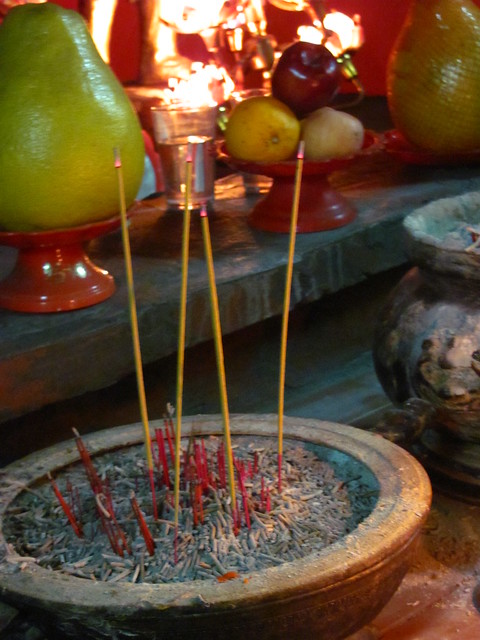

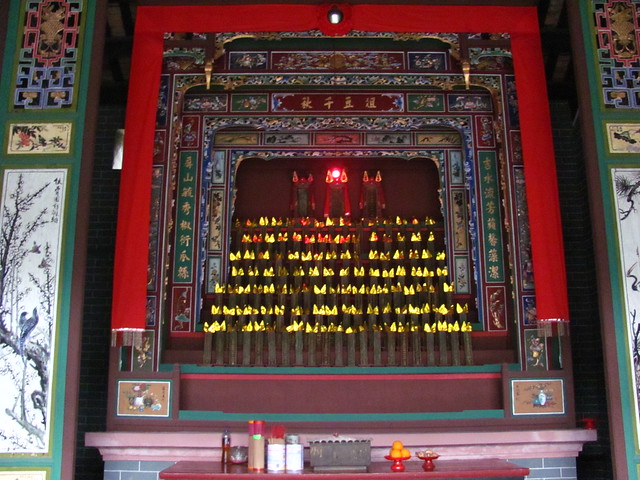
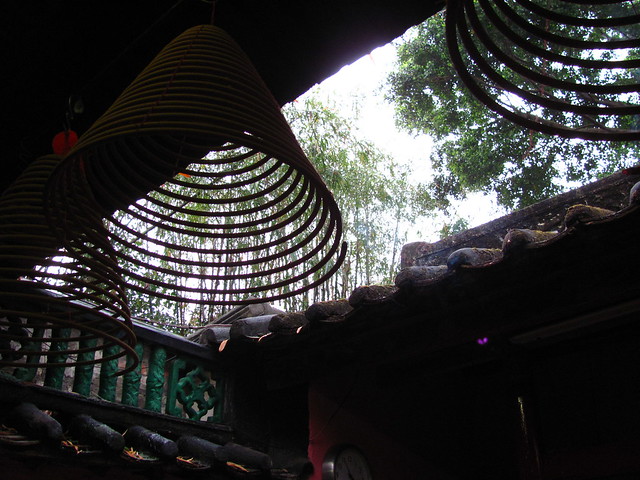
 That evening we went out for a group dinner of Poon Choi, a communal Cantonese dish that translates as “big bowl feast”. While I didn’t sample everything that came in it (mostly meats of various provenance), I did get my first taste of octopus and pig skin.
That evening we went out for a group dinner of Poon Choi, a communal Cantonese dish that translates as “big bowl feast”. While I didn’t sample everything that came in it (mostly meats of various provenance), I did get my first taste of octopus and pig skin.

 Dessert in Hong Kong often consists of a bowl of fruits and congealed jelly that you dip into sweet milk.
Dessert in Hong Kong often consists of a bowl of fruits and congealed jelly that you dip into sweet milk.
 Dennis and Amanda tried a durian pancake, possibly the most pungent food item on the planet. As soon as they opened the container everyone else in the room got to suffer along with them. The look on their face tells the rest of the story.
Dennis and Amanda tried a durian pancake, possibly the most pungent food item on the planet. As soon as they opened the container everyone else in the room got to suffer along with them. The look on their face tells the rest of the story.
 Later that spring I discovered that the Shaw Brothers Studio was located right next to HKUST. While not particularly active today, they’re known for popularizing the kung-fu movie genre in the 60’s and 70’s, and their logo is familiar to anyone who saw Quentin Tarantino’s Kill Bill movies.
Later that spring I discovered that the Shaw Brothers Studio was located right next to HKUST. While not particularly active today, they’re known for popularizing the kung-fu movie genre in the 60’s and 70’s, and their logo is familiar to anyone who saw Quentin Tarantino’s Kill Bill movies.
 Most people used the four day Easter weekend to travel; I almost took an opportunity to visit Thailand but needed to save money and time for other excursions so I stayed in Hong Kong. My friend Mariel was another stay-behinder, so we decided to go out to Tai Po in the New Territories to explore the Bride’s Pool Hiking Trail.
Most people used the four day Easter weekend to travel; I almost took an opportunity to visit Thailand but needed to save money and time for other excursions so I stayed in Hong Kong. My friend Mariel was another stay-behinder, so we decided to go out to Tai Po in the New Territories to explore the Bride’s Pool Hiking Trail.
The short trail runs along a creek on an upper level that’s easily accessible. This terminates in a waterfall down a level into the namesake Bride’s Pool, where legend has it a bride was once on her way to meet her groom when she fell over the edge due to stormy weather and drowned. (A fairly typical outcome for a Chinese story.) So of course we needed to get as close as possible to this deadly waterfall ledge to see for ourselves.



 However, getting down to the lower level was a bit more difficult, requiring a winding, brush-covered unmarked pathway.
However, getting down to the lower level was a bit more difficult, requiring a winding, brush-covered unmarked pathway.
 Yet after much trial and error we finally made it down and arrived at the shore of Bride’s Pool.
Yet after much trial and error we finally made it down and arrived at the shore of Bride’s Pool.
I ventured around the edge of the pool to see the real backside of water.
Mariel opted to swim (well, wade) the way back. I’m not sure how anyone ever drowned in this pool.
We conquered Bride’s Pool!
To celebrate, we got from this vending machine possibly the strangest bottle of Coca-Cola I’d ever have. As the directions state, after taking a quaff to free up some space, you re-seal the bottle and flip it upside down, where some chemical magic causes ice crystals to form in the coke, transforming it into a Coca-Cola slushy of sorts. Strange yet refreshing after a hike. The fact that I’ve never come across such an experience in the US has led be to assume that the ingredients required to achieve this effect won’t pass USDA muster.
 Once back in the city we finished with a dinner of pho.
Once back in the city we finished with a dinner of pho.

 One other must-mention experience for which I don’t have any photos was the time I attended a Beijing opera performance at the Hong Kong Academy of Performing Arts with my friend Igor. The 3+ hour show was excerpted from the Three Kingdoms, full of colorful costumes and sharply toned vocals and music that set it far apart from western opera. However, while the show had a subtitle screen for Chinese and English, it turned out the English translations were only very simplified summaries of the entire scene. We’d often go 10-15 minutes before getting a single bit of text like: “The king grows suspicious.”
One other must-mention experience for which I don’t have any photos was the time I attended a Beijing opera performance at the Hong Kong Academy of Performing Arts with my friend Igor. The 3+ hour show was excerpted from the Three Kingdoms, full of colorful costumes and sharply toned vocals and music that set it far apart from western opera. However, while the show had a subtitle screen for Chinese and English, it turned out the English translations were only very simplified summaries of the entire scene. We’d often go 10-15 minutes before getting a single bit of text like: “The king grows suspicious.”
The intermission didn’t come until well past the 2 hour mark, which we at first thought was the end of the show. We debated whether to leave early given the lateness and our confusion, but ultimately decided to finish what we paid for. I’m glad we did. The second “half” was really only 45 minutes, and it was where virtually all the action and choreography was concentrated as the story ended with a spectacular battle that reflected the wuxia genre of Chinese fiction (e.g. Crouching Tiger, Hidden Dragon).
Alas, the end of May finally arrived and the school semester was over. It was time to make our final treks from HKUST through the MTR to explore the city we called home for more than four months.




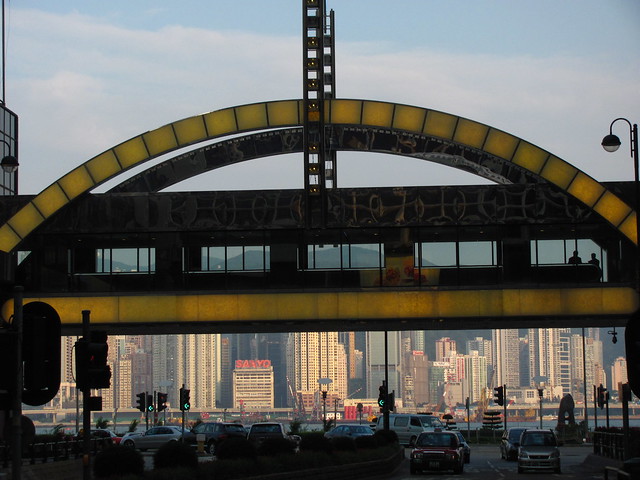



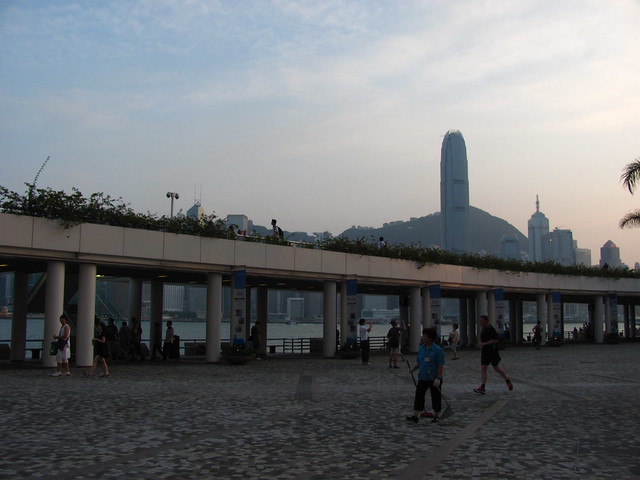




 This also meant final meals out with friends, from getting a large group together for dim sum:
This also meant final meals out with friends, from getting a large group together for dim sum:
To finally trying (and photographing) a more upscale Hong Kong dining experience on our limited budgets:
 Hong Kong is an amazing multicultural city that blends its unique modern architectural identity with multiple rich layers of cultural history amid a breathtakingly beautiful coastal landscape. In all my travels I haven’t found any place else quite like it, and I’m incredibly glad I had the opportunity to spend as much time there as I did. It’s also a city of rapid change, and as it becomes more integrated with the rest of China expect that rate of change to only increase. Just as you could not step in the same river twice, I don’t expect it’s possible to ever return to the same Hong Kong.
Hong Kong is an amazing multicultural city that blends its unique modern architectural identity with multiple rich layers of cultural history amid a breathtakingly beautiful coastal landscape. In all my travels I haven’t found any place else quite like it, and I’m incredibly glad I had the opportunity to spend as much time there as I did. It’s also a city of rapid change, and as it becomes more integrated with the rest of China expect that rate of change to only increase. Just as you could not step in the same river twice, I don’t expect it’s possible to ever return to the same Hong Kong.
With eight years of distance, my memories between my 2011 experience in Asia and my equally ambitious 2010 trip based in Rome have had time to flatten. As much as I loved my time in Rome, I perhaps now feel a little more affinity towards my time in Hong Kong, mostly due to the fact that I was able to make many more friends who were equally interested in exploring the city’s many prominent landmarks and hidden discoveries.
I perhaps now feel a little more affinity towards my time in Hong Kong, mostly due to the fact that I was able to make many more friends who were equally interested in exploring the city’s many prominent landmarks and hidden discoveries.
And although this page may represent the end of my time in Hong Kong, it’s really just the very beginning of a much longer story from across Asia that covers nearly 50 parks and 133 coasters from several countries. That includes Ocean Park Hong Kong and Hong Kong Disneyland, as well as excursions to Guangzhou, Kuala Lumpur & Singapore, Chengdu, Taiwan, Shenzhen, and concluding with a month-long solo trip to Shanghai, South Korea, and Japan.

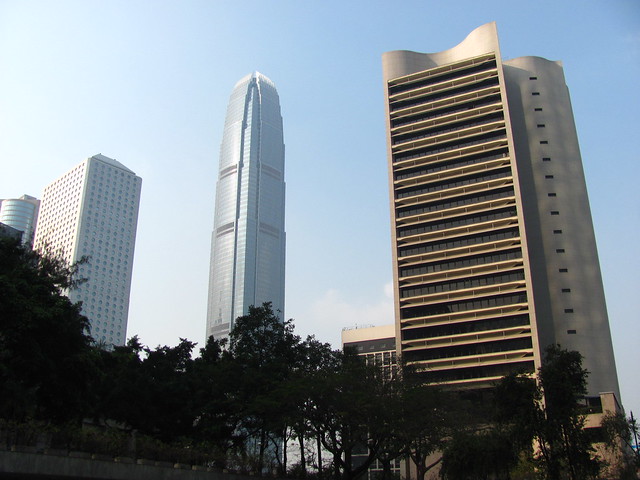




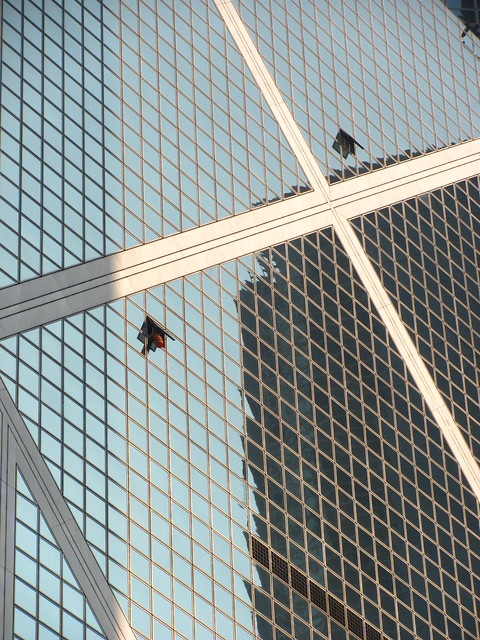




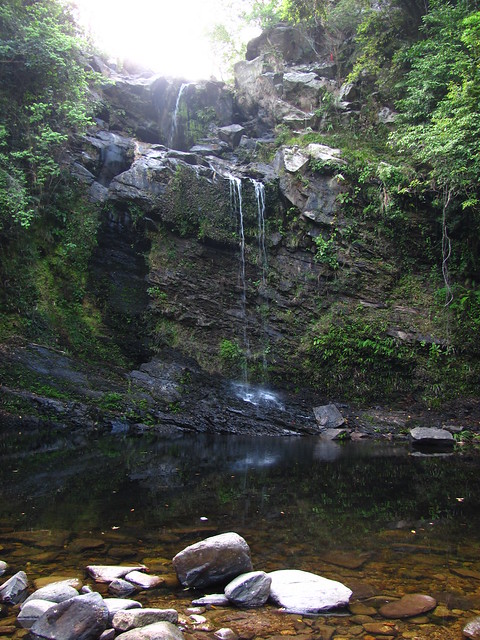









Comments